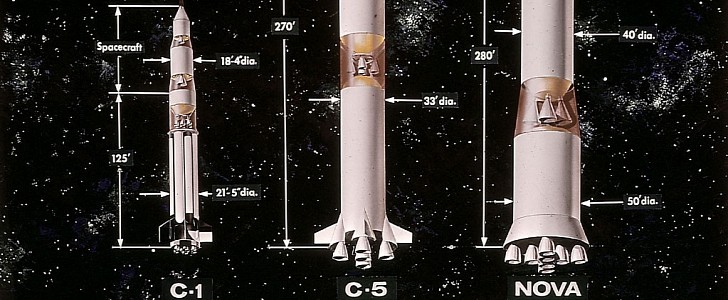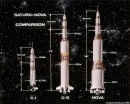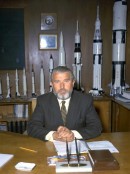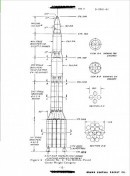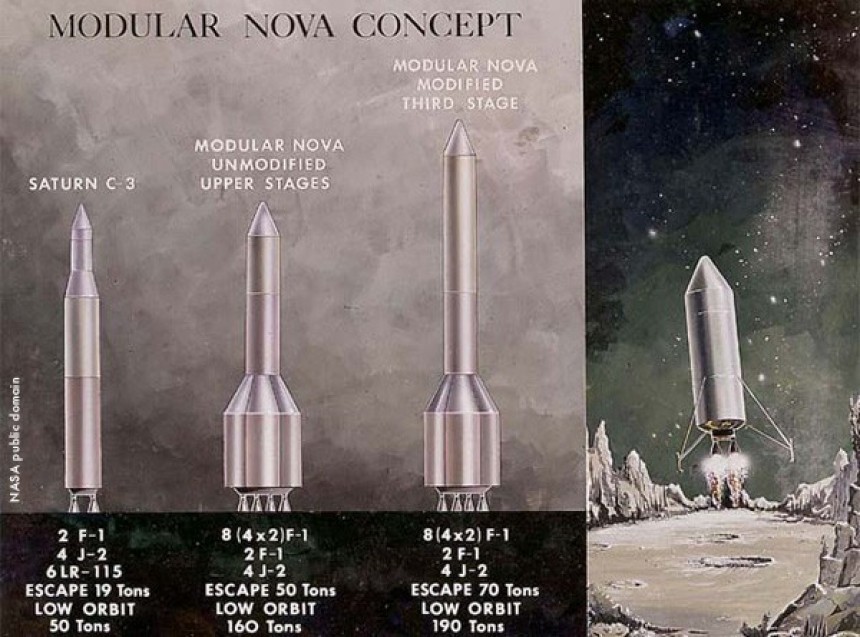Ford is a mediocre car company. Or at least, it can be at times, especially these days. But there was a time, years and years ago, when Ford dipped their fingers into many other fields besides automotive.
In the days of the Falcon, Thunderbird, and the Lincoln Continental, Ford's now-defunct aerospace division had ideas for something certifiably insane. A grand space mission the likes of which we've never seen since and hasn't so much as been proposed again in any significant capacity. The story behind this mission is one of grand ambition, genius minds, and in the end, abject disappointment.
The tale begins in of all places, Italy, in the mid-1950s. More specifically, at the meeting of the Seventh International Astronautical Congress in Rome in September 1956. A yearly gathering still taking place to this very day, full of some of the most intelligent minds in aerospace and its related fields. At that year's event was an Italian aviation and aerospace pioneer by the name of Gaetano Crocco, and his ideas were about to blow people's minds.
Mr. Crocco envisioned a mission that made JFK's ambitions for the Moon seem tame. A grand voyage beyond the bounds of the Earth to circumnavigate both Venus and Mars in a specially built nuclear-powered spacecraft. Think of it like the same Apollo 8 mission that took Americans on a circumnavigation of the Moon, except turning the ambition all the way up to 11. At that moment, the Americans were still a full two years away from founding NASA, but you bet yourself news of Gaetano Crocco's ambitions traveled far.
By 1962, the U.S. and Soviet Union were fully committed to ambitions of landing on the Moon before the decade was over. In May of that year, NASA's Future Projects Office at the Marshall Space Flight Center in Huntsville, Alabama, awarded grants of $250,000 (around $2.4 million in today's money) to three aerospace companies to begin researching ideas for a space mission much like the one an eccentric Italian aviator dreamed up all those years prior.
Those companies were General Dynamics, Lockheed (now Lockheed Martin), and a company called Aeronutronic, the defense wing of Ford Motor Company's aerospace division. Thus, the Early Manned Planetary-Interplanetary Roundtrip Expeditions, or EMPIRE program, was born.
While Lockheed and General Dynamics focused on more practical singular missions to Venus or Mars, Ford Aerospace was tasked with something far grander. In short, they planned to use a rocket still in development as its basis. One that was fresh off its approval to participate in NASA's Apollo Lunar Orbit Rendevous and Landing mission.
At the early point, this rocket was called the Saturn C-5. We know and love it today as the Saturn V super-heavy rocket. Had things gone according to plans, NASA's Huntsville rocketry team, led by the eccentric ex-German scientist Werner Von Braun, would have been slated to build Saturn V engines far more powerful than the Rocketdyne F-1 engines that took men to the Moon.
Dubbed project Nova, there's every reason to believe such a rocket would have used nuclear fuel as a primary propellant, with chemical rockets used only for RCS thrusters and in the first stage booster. As a result, the rocket would have been taller, wider, and heavier than the Saturn V we're all familiar with.
In the end, as many as two different dual-planet circumnavigation missions were proposed by Ford Aerospace and NASA. One similar in many regards to Old Man Crocco's original proposal. This method would have used specific and precise positions of the planets to expend as little fuel as possible and to allow the gravitational pulls of each respective planet to sling-shot the spacecraft to and from their destinations and then back home again, all within the span of a year.
A second proposal to swing around the Sun itself one and a half times for the same effect was also put forth by Lockheed and General Dynamics. There was even an engine developed for just such an occasion. Called the Nuclear Engine for Rocket Vehicle Application (NERVA), this nuclear thermal rocket engine underwent legitimate ground testing before the Nixon administration axed the program in 1973.
By the end of that year, the Apollo moon program itself was also scrapped, leaving any proposal of possibly making it to Mars or Venus by the early 1980s totally up in smoke. Instead, Congress and the President, in their infinite wisdom, decided to throw billions in funding down the proverbial black hole that was the Space Shuttle.
Calling this a pity wouldn't be doing it justice. Meanwhile, Ford sold off their aerospace division in the year 1990 and focused instead on attempting, and more often than not, failing to recapture the magic of the original Mustang.
The tale begins in of all places, Italy, in the mid-1950s. More specifically, at the meeting of the Seventh International Astronautical Congress in Rome in September 1956. A yearly gathering still taking place to this very day, full of some of the most intelligent minds in aerospace and its related fields. At that year's event was an Italian aviation and aerospace pioneer by the name of Gaetano Crocco, and his ideas were about to blow people's minds.
Mr. Crocco envisioned a mission that made JFK's ambitions for the Moon seem tame. A grand voyage beyond the bounds of the Earth to circumnavigate both Venus and Mars in a specially built nuclear-powered spacecraft. Think of it like the same Apollo 8 mission that took Americans on a circumnavigation of the Moon, except turning the ambition all the way up to 11. At that moment, the Americans were still a full two years away from founding NASA, but you bet yourself news of Gaetano Crocco's ambitions traveled far.
By 1962, the U.S. and Soviet Union were fully committed to ambitions of landing on the Moon before the decade was over. In May of that year, NASA's Future Projects Office at the Marshall Space Flight Center in Huntsville, Alabama, awarded grants of $250,000 (around $2.4 million in today's money) to three aerospace companies to begin researching ideas for a space mission much like the one an eccentric Italian aviator dreamed up all those years prior.
While Lockheed and General Dynamics focused on more practical singular missions to Venus or Mars, Ford Aerospace was tasked with something far grander. In short, they planned to use a rocket still in development as its basis. One that was fresh off its approval to participate in NASA's Apollo Lunar Orbit Rendevous and Landing mission.
At the early point, this rocket was called the Saturn C-5. We know and love it today as the Saturn V super-heavy rocket. Had things gone according to plans, NASA's Huntsville rocketry team, led by the eccentric ex-German scientist Werner Von Braun, would have been slated to build Saturn V engines far more powerful than the Rocketdyne F-1 engines that took men to the Moon.
Dubbed project Nova, there's every reason to believe such a rocket would have used nuclear fuel as a primary propellant, with chemical rockets used only for RCS thrusters and in the first stage booster. As a result, the rocket would have been taller, wider, and heavier than the Saturn V we're all familiar with.
A second proposal to swing around the Sun itself one and a half times for the same effect was also put forth by Lockheed and General Dynamics. There was even an engine developed for just such an occasion. Called the Nuclear Engine for Rocket Vehicle Application (NERVA), this nuclear thermal rocket engine underwent legitimate ground testing before the Nixon administration axed the program in 1973.
By the end of that year, the Apollo moon program itself was also scrapped, leaving any proposal of possibly making it to Mars or Venus by the early 1980s totally up in smoke. Instead, Congress and the President, in their infinite wisdom, decided to throw billions in funding down the proverbial black hole that was the Space Shuttle.
Calling this a pity wouldn't be doing it justice. Meanwhile, Ford sold off their aerospace division in the year 1990 and focused instead on attempting, and more often than not, failing to recapture the magic of the original Mustang.
